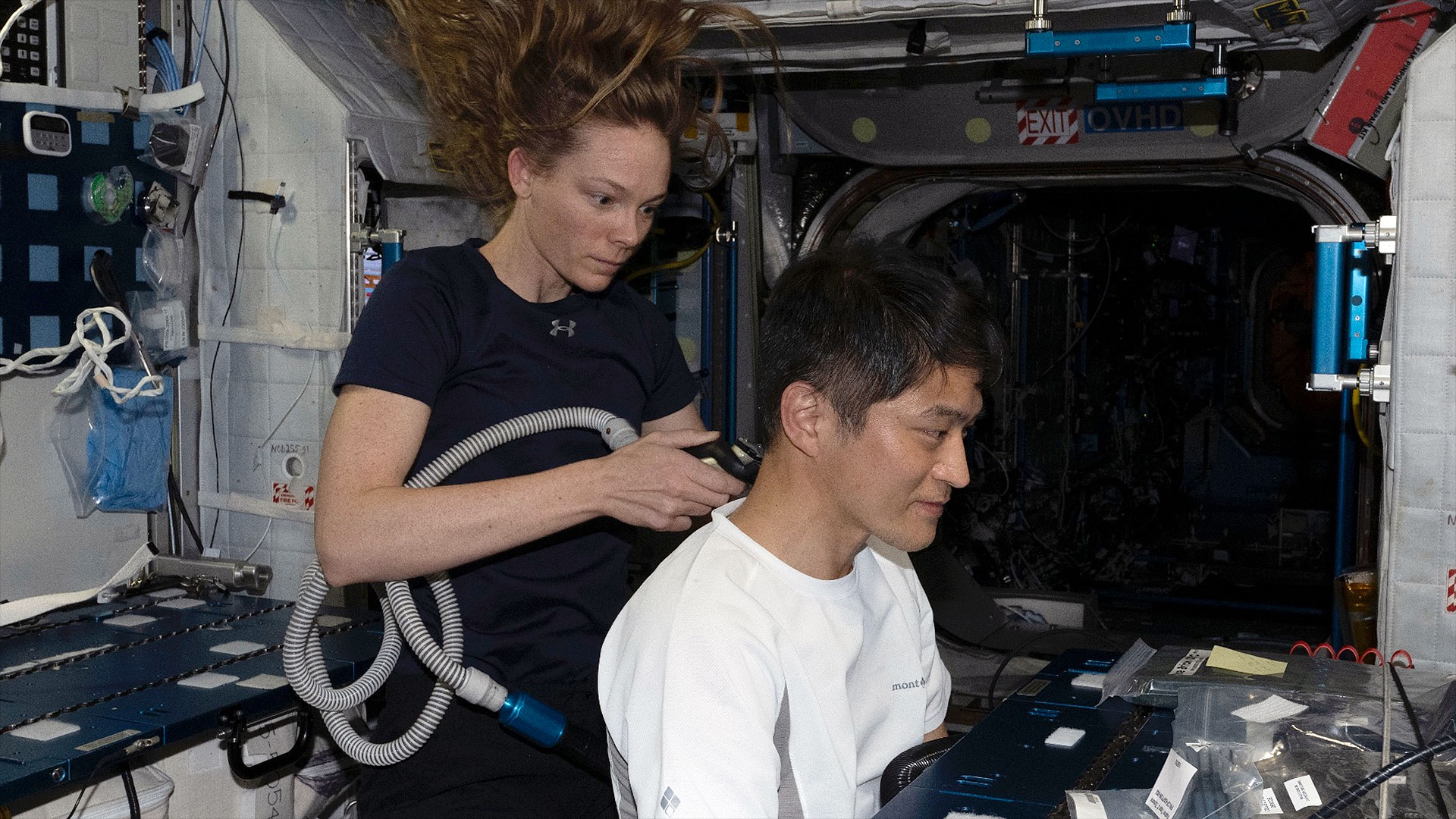Extremely distant galaxy reveals stories of stars from their cradles to their graves
Astronomers have discovered sites of star formation and destruction that existed just 600 million years post-Big Bang.

Astronomers have identified what might be the most distant site of star birth, and death, ever seen.
The region is located in an interstellar cloud of gas and dust, called a nebula, that also dwells in a galaxy located some 13.2 billion light-years from Earth. This tells us that the area is seen as it was only about 600 million years after the Big Bang.
When stars reach the end of their fuel supply, used in their intrinsic nuclear fusion processes, their cores collapse while their outer layers erupt explosively outwards in what is known as a supernova. These supernova explosions spread the elements the stars had forged during their lifetimes throughout the stellar bodies' surroundings. Those elements form massive clouds of gas called nebulas in which cool, overly dense regions collapse to birth stars. That means these elements become the building blocks for the next generation of stars, so supernova wreckage can reveal regions where stellar recycling occurs.
Thus, this recent discovery of stellar cradles and graves within the distant interstellar nebula could help astronomers better understand such stellar lifecycles playing out inside massive clouds that existed when the universe was in its infancy.
Related: James Webb Space Telescope reveals how galaxies made the early universe transparent
The new observations were made by a team of astronomers led by Nagoya University scientist, Yoichi Tamura, using the Atacama Large Millimeter/submillimeter Array (ALMA), located in the Atacama Desert region of Northern Chile.
The team had observed this distant and early nebula previously, picking up radio waves emitted via oxygen and dust. Distribution of such matter can reveal how sites of stellar birth and death are spread throughout interstellar clouds, but at that time, the team didn’t have the resolution necessary to observe the full nebular structure.
Get the Space.com Newsletter
Breaking space news, the latest updates on rocket launches, skywatching events and more!
That changed, however, when the researchers zoomed in on MACS0416_Y1 and observed it for 28 hours with ALMA.
This lengthy process revealed that regions of dust and oxygen emissions in the nebula weave around each other while avoiding close contact. This could be the result of intense ultraviolet radiation from newly formed stars within the nebula energetically stripping electrons from atoms in the surrounding gas, a process called ionization.
Measuring the motion of the gas in the nebula also showed the astronomers how this is an environment in which many stars may be born together in mass clusters.
In addition to this, the team spotted a huge cavity within the dust-dominated regions of the nebula that appears to be about 1,000 light-years wide. This cavity could be a superbubble, or a huge hole in the nebula known to occur in regions where massive stars exist together.
The larger the star, the more rapidly it burns through its fuel for nuclear fusion, ultimately triggering a more massive supernova explosion when it dies. If these supernova blasts are repeated, they can have the effect of clearing gas and dust in the vicinity and creating those superbubble voids like the one spotted by the team.
That means while the woven tendrils of gas in the nebula represent the sites of stellar birth, this large void in the same massive cloud of matter potentially signifies stellar death on a large scale — making this distant nebula both a cradle and a grave for stars.
Spotting the structure of a nebula in an ancient galaxy that existed 13.2 billion years ago in the 13.8 billion-year-old universe was no simple feat, even for an instrument as powerful as ALMA.
"It corresponds to capturing the extremely weak light emitted by two fireflies located 3 centimeters apart on the summit of Mount Fuji as seen from Tokyo and being able to distinguish between those two fireflies," team member and University of Tsukuba astronomer Takuya Hashimoto said in a statement.
The team intends to follow up on this work by making further observations with the James Webb Space Telescope and forthcoming Extremely Large Telescope currently under construction in the Atacama Desert.
The team's research was published on July 13 in the Astrophysical Journal.
Join our Space Forums to keep talking space on the latest missions, night sky and more! And if you have a news tip, correction or comment, let us know at: community@space.com.

Robert Lea is a science journalist in the U.K. whose articles have been published in Physics World, New Scientist, Astronomy Magazine, All About Space, Newsweek and ZME Science. He also writes about science communication for Elsevier and the European Journal of Physics. Rob holds a bachelor of science degree in physics and astronomy from the U.K.’s Open University. Follow him on Twitter @sciencef1rst.









